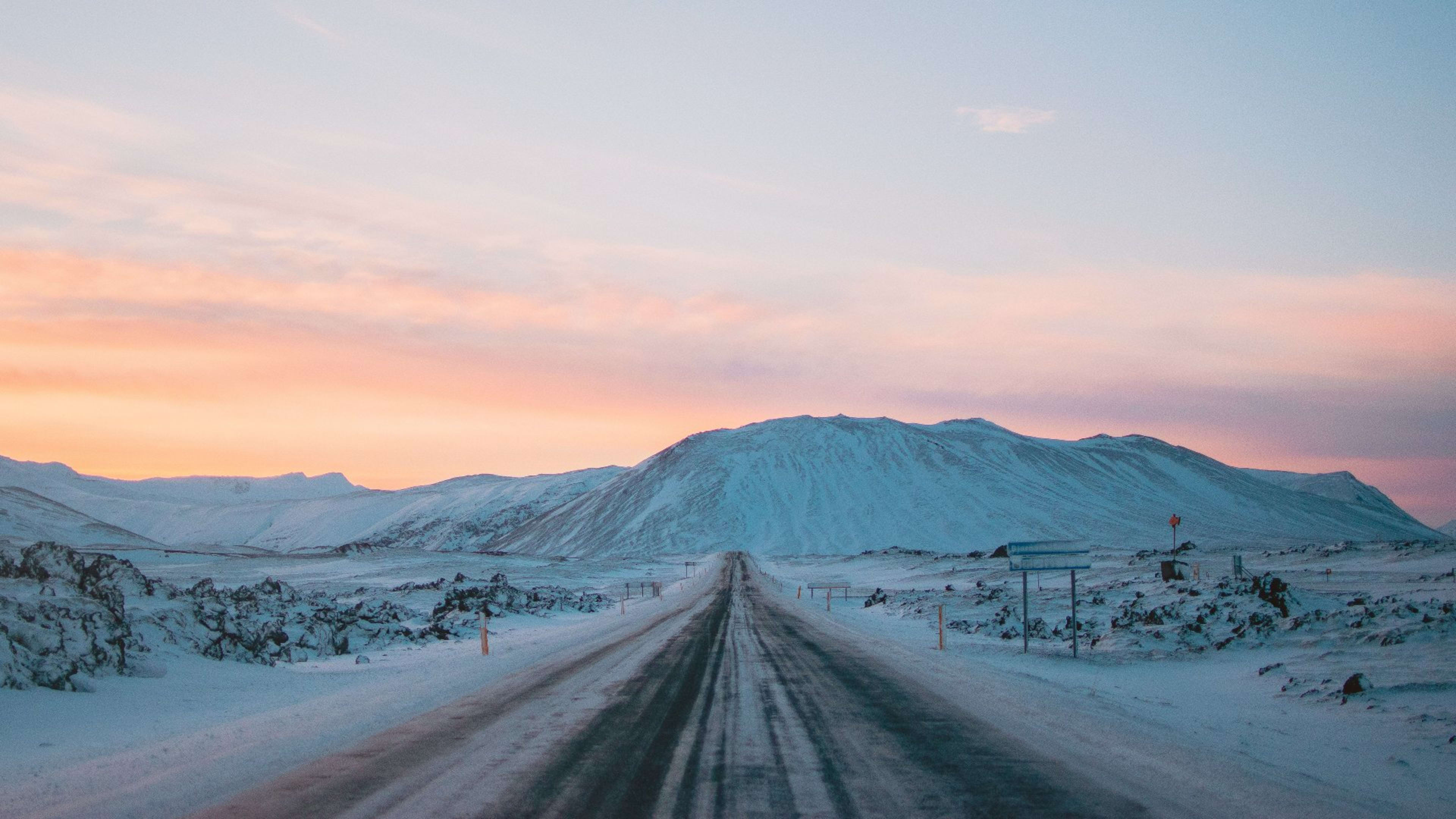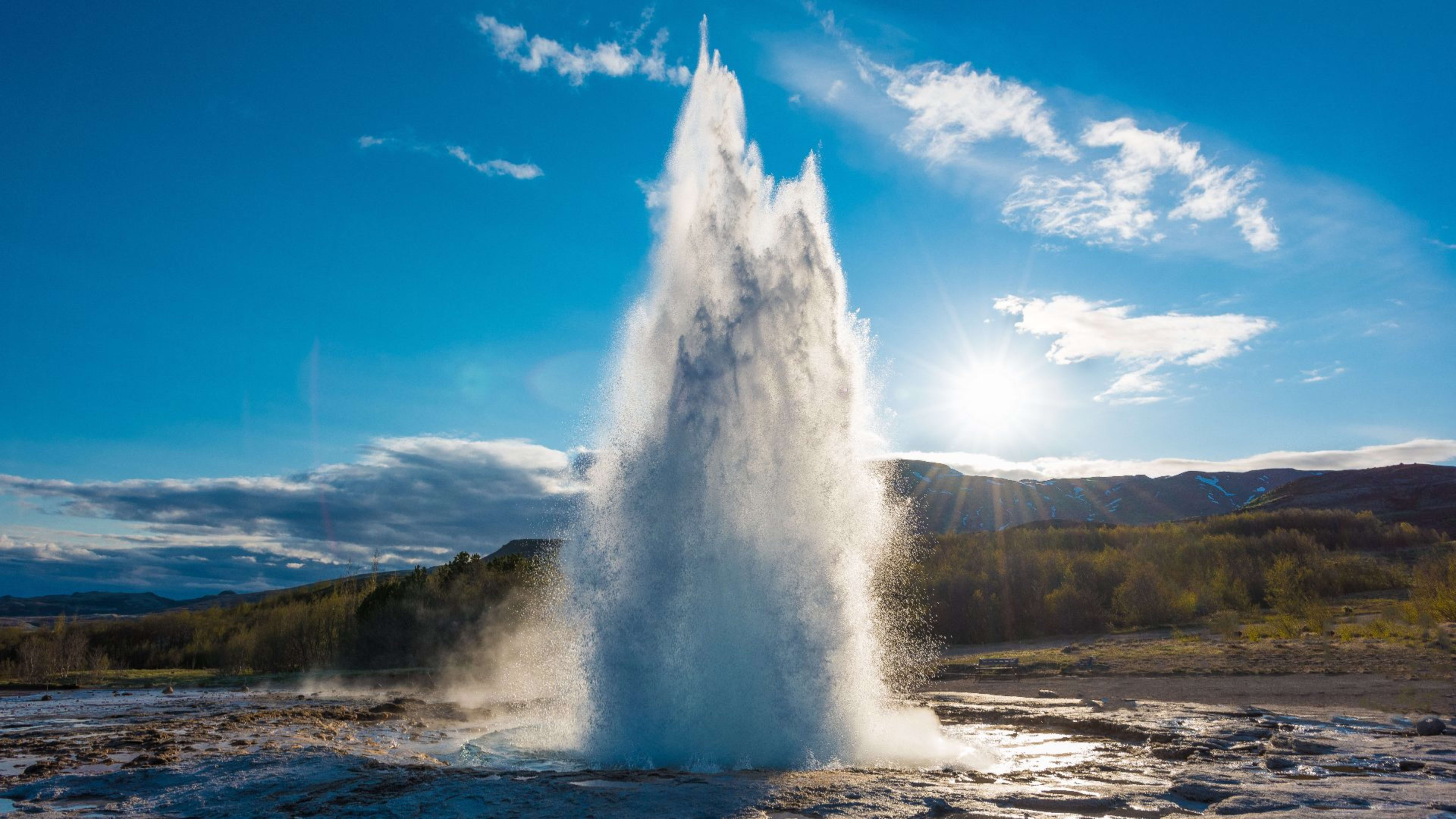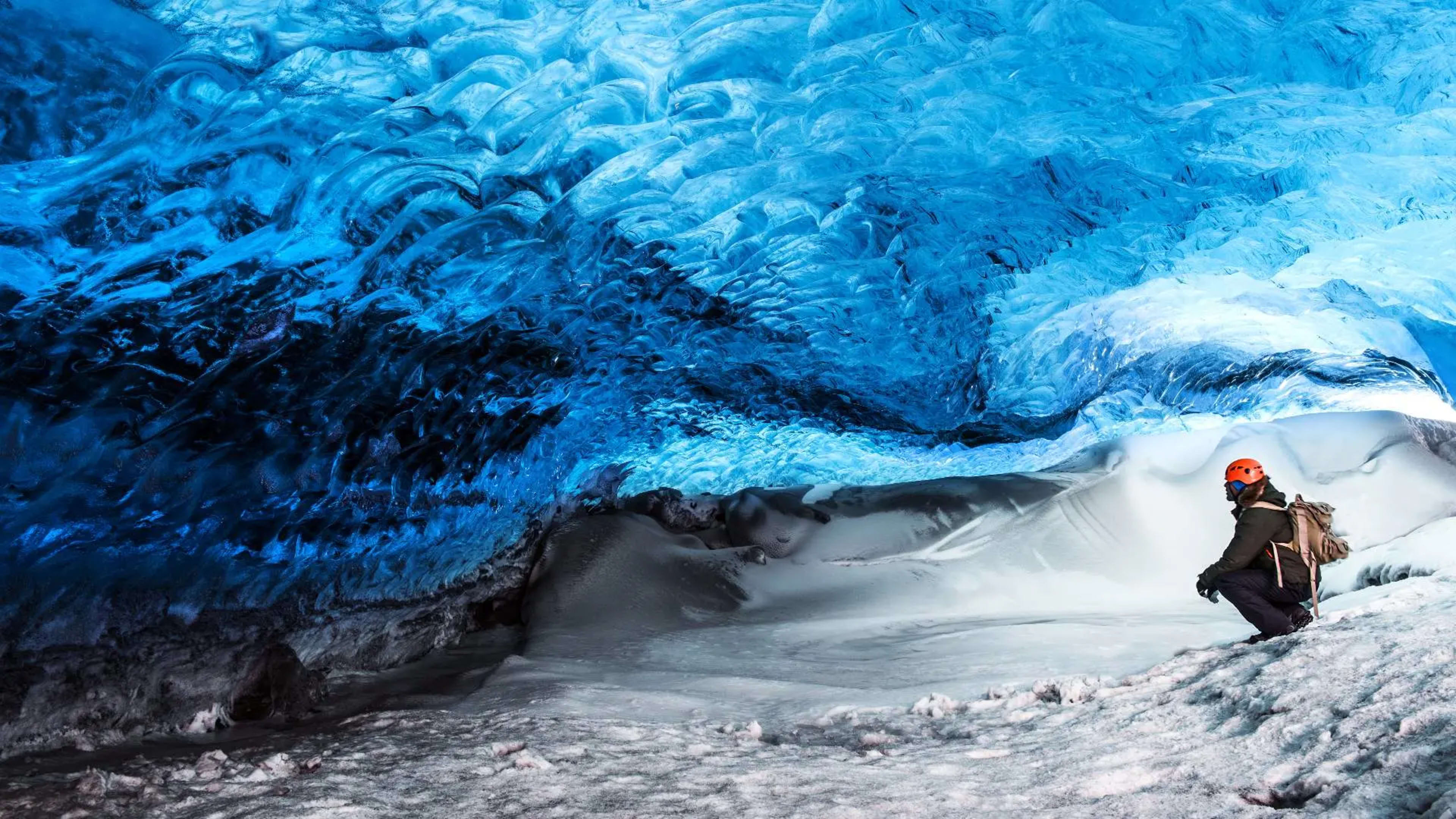When Iceland is cloaked in twilight and the Northern Lights dance across the ever-darkening sky, Snæfellsnes in winter reveals its most primal, wild beauty. The peninsula, often called “Iceland in miniature,” shows off an otherworldly side in its darkest season, from frosted volcanic cones to freezing waves lashing at the coast.
Though daylight is short, locals and adventurers find ways to make the most of the snowy landscape. Explorers spend time chasing the aurora, climbing ice-capped summits, and capturing the soft winter light with their cameras.
- Excited to dive in? Your frosty adventure begins here with these winter tours in Iceland.
Winter on Iceland’s Snæfellsnes Peninsula
Winter spans November through March, with the deepest snow and ice usually from December to February. Landscapes are often heavily draped in white, with fierce winds even causing snowdrifts. Average daytime temperatures hover around 0°C (32°F), with cold snaps down to -10°C (14°F). Strong winds can make it feel much colder, too.
Daylight is limited, with some days in peak winter getting just four to six hours. That means there’s less time for sun-dependent activities, but darkness also maximizes opportunities for spotting the Northern Lights.
Additionally, the low angle of the sun presents a massive advantage for photographers. During winter in Snæfellsnes, sunlight skims the horizon for hours, resulting in an extended “golden hour” that would usually only last moments. It bathes the stark, white landscape in soft, dreamy hues, making it a beautiful playground for you and your camera.

Top Things to Do in Snæfellsnes in Winter
In the winter months, a different Iceland emerges on the Snæfellsnes Peninsula. The postcard-pretty landscapes, covered in fresh powder and rising dramatically from the ice, make for an unforgettable journey. Read on for the best winter experiences in Snæfellsnes.
1. Capture Iceland's most photographed mountain: Kirkjufell Mountain
Whether it’s winter, summer, or the shoulder seasons in between, a visit to Kirkjufell is a must. Due to tumultuous conditions, climbing the peak is strictly prohibited from November to mid-June. But the mountain is best viewed from afar, anyway. Locals call it the “Church Mountain” for its distinct, steeple-like silhouette; in winter, it’s shrouded in a thick blanket of snow.
Don’t forget to take a picture; Kirkjufell is said to be the most photographed mountain in Iceland. It’s especially striking with the Kirkjufellsfoss Waterfall in the foreground. In winter, the partially frozen twin cascades sparkle under the muted daylight, an even more scenic subject for your photo album. After the sun sets, the Kirkjufell area is also a stunning place to watch the Northern Lights!
Fun Fact: Game of Thrones fans may recognize Kirkjufell Mountain as the fictional Arrowhead Mountain. It appeared as a landmark north of the Wall in the later seasons of the show.
- Ready for an epic expedition? Explore the rugged beauty of Snæfellsnes with other iconic spots of West and South Iceland on this 7-Day Guided Group Tour.
2. Go on scenic coastal walks at Arnarstapi
The picturesque fishing village of Arnarstapi lies on the southern coast of the Snæfellsness Peninsula. Following the scenic paths by its shoreline will take you to some of the region’s most beautiful seascapes. Looming over the wild sea are jagged coastal cliffs and dark basalt formations, including the famous arch Gatklettur.
In winter, the coastal setting is quiet and peaceful. The snow-topped mountains in the distance paint a wintry picture that’s a nice contrast to the craggy black rocks of Arnarstapi, only lightly dusted with white.
3. Discover the golden- and black-sand beaches of Snæfellsnes
A winter beach trip may sound strange, but Snæfellsnes’ coastline is always in season.
The golden shores of Ytri Tunga Beach, rare in a country teeming with black-sand coastlines, are a popular seal-watching spot. The adorable inhabitants haul out to sunbathe on the boulders during low tide. Though they can be elusive in the deepest winter months, their presence adds a wild magic to the scene.
For a different kind of drama, visit Djúpalónssandur Beach, one of Iceland’s most beautiful black sand and pebble beaches. Here, explore the pristine lagoons, lava fields, rock formations, and large fragments of a tragic shipwreck lying on the shore. You’ll also find the famous “lifting stones,” four ancient stones once used by fishermen to test their strength.
Safety Note: The sneaker waves on Djúpalónssandur Beach are notoriously large and unpredictable. Never turn your back on the ocean and stay away from the water's edge.
4. Marvel at the Rock Castles of Lóndrangar
Nature once again shows off with the jagged basalt columns known as the Lóndrangar Cliffs. Standing 75 and 61 metres (246 and 200 feet) tall, the twin towers loom over the crashing waves. The sight is breathtaking all year, but especially so in winter when the dark cliffs are coated with fresh powder.
Hiding behind the “Rock Castles” is the Malarrif Lighthouse, another postcard-worthy landmark to visit in Snæfellsnes in winter.
5. Experience the power of Snæfellsjökull glacier
The heart of the peninsula is the glacier-capped Snæfellsjökull stratovolcano, embraced by the Snæfellsjökull National Park. It is the only national park in Iceland that extends out to kiss the sea.
In winter, the area is swathed in gleaming white, a winter wonderland that’s as wild and beautiful as they come. It’s no accident that Jules Verne chose Snaefellsjokul as the starting point for Journey to the Center of the Earth. For adventure chasers, guided hiking and ice climbing are permitted on the ice cap. However, it requires complete glacier hiking equipment and a professional guide due to the rugged terrain and hidden crevasses.
- Planning a journey to the Earth’s core? Delve into the island’s geothermal heart one of Iceland Tours’ action-packed volcano tours.
Northern Lights in Snæfellsnes
With little light pollution and dramatic landscapes, Snæfellsnes is an ideal aurora-watching region.
When hunting for the aurora borealis, it’s crucial to time your hunt well. The Northern Lights are typically visible between 9 pm and 2 am, but the true peak hours often fall around midnight. Clear, cloudless skies and strong geomagnetic activity (Kp index) are essential.
It’s also important to choose the right spot for the chase. The best places are those away from the few small towns and with dramatic foregrounds.
- Kirkjufell Mountain and Kirkjufellsfoss
- Djúpalónssandur Beach
- Lóndrangar Cliffs
- Hellnar and Arnarstapi Coast
- Snæfellsjökull Glacier
Photography Tip: Use a tripod and a wide-angle lens. Long exposures require a steady setup to capture both stars and aurora.
- Make time for winter’s main event. Witness the sky-high spectacle of the aurora on one of our dedicated Northern Lights tours.
Winter Driving Safety and Vehicle Requirements
Driving in Snæfellsnes in winter requires caution and preparation. The spectacular landscapes are definitely worth the drive, but conditions can change rapidly in the blink of an eye.
While main roads (like Route 54) are generally paved and regularly plowed, renting a 4x4 in winter is strongly recommended. It simply provides better clearance and traction, which is important for navigating snow and ice patches. You’ll also often turn to rougher gravel roads on the way to popular attractions, so a 4x4 makes traveling easier and safer. All cars in winter must have winter tires, with most even sporting studded tires for better grip.
The number one rule before sightseeing in Iceland is to always check the weather forecast before stepping out the door. Visit Road.is regularly for real-time road updates and weather conditions.
Travel Tip: It is mandatory by Icelandic law to drive with your headlights on 24 hours a day, year-round.
Related: How to Get Around Iceland
Popular Snæfellsnes Winter Tours
With shorter daylight hours and challenging conditions, tours are a great way to see the best of Snæfellsnes in winter.
Travelers who enjoy maximum independence may explore our recommended Icelandic self-drive packages. These often include pre-booked accommodation, a rental car, and a detailed itinerary to keep you safe and on track.
On the other hand, those who prefer sightseeing with a guide can consider our range of guided group tours in Iceland. Privately guided tours are also available for a truly personalized experience in the Land of Ice and Fire.
What’s more, if you’re based in the capital, consider our multi-day trips from Reykjavík. This way, you can combine the dramatic landscapes of Snæfellsnes with other winter attractions like the South Coast.
Soak in the Magic of Snæfellsnes in Winter with Iceland Tours
Travelling to Snæfellsnes in winter is a study in powerful contrasts. Black cliffs capped with white snow, the roar of the ocean waves against the profound quiet of remote lava fields. The brief, golden sunlight giving way to the dark, aurora-filled skies. Truly, "Iceland in miniature" lets you connect with nature while painting the skies dark enough to hunt the Northern Lights.
Discover the region on our 7-Day West & South Iceland guided group tour and experience Iceland’s winter majesty first-hand.
FAQ: Snæfellsnes in Winter
Is Snæfellsnes accessible year-round?
Yes, but winter access is heavily dependent on weather and real-time road conditions.
Is it worth visiting the Snæfellsnes Peninsula?
Absolutely. Its diverse landscapes, often called "Iceland in miniature," make it one of the most rewarding and beautiful regions to visit.
Is Snæfellsnes worth it in winter?
Yes, especially if you seek solitude, dramatic snowy landscapes, and excellent opportunities to view the Northern Lights.
How cold is it in Snæfellsnes in winter?
Average daytime temperatures hover around 0°C (32°F), but strong winds make the wind chill significantly colder.
How much daylight is there in Snæfellsnes in winter?
During peak winter (December to January), daylight can range from four to six hours.
Are the roads paved in Snæfellsnes?
Main roads, including Route 54, are paved, but many roads leading to specific attractions are gravel.



